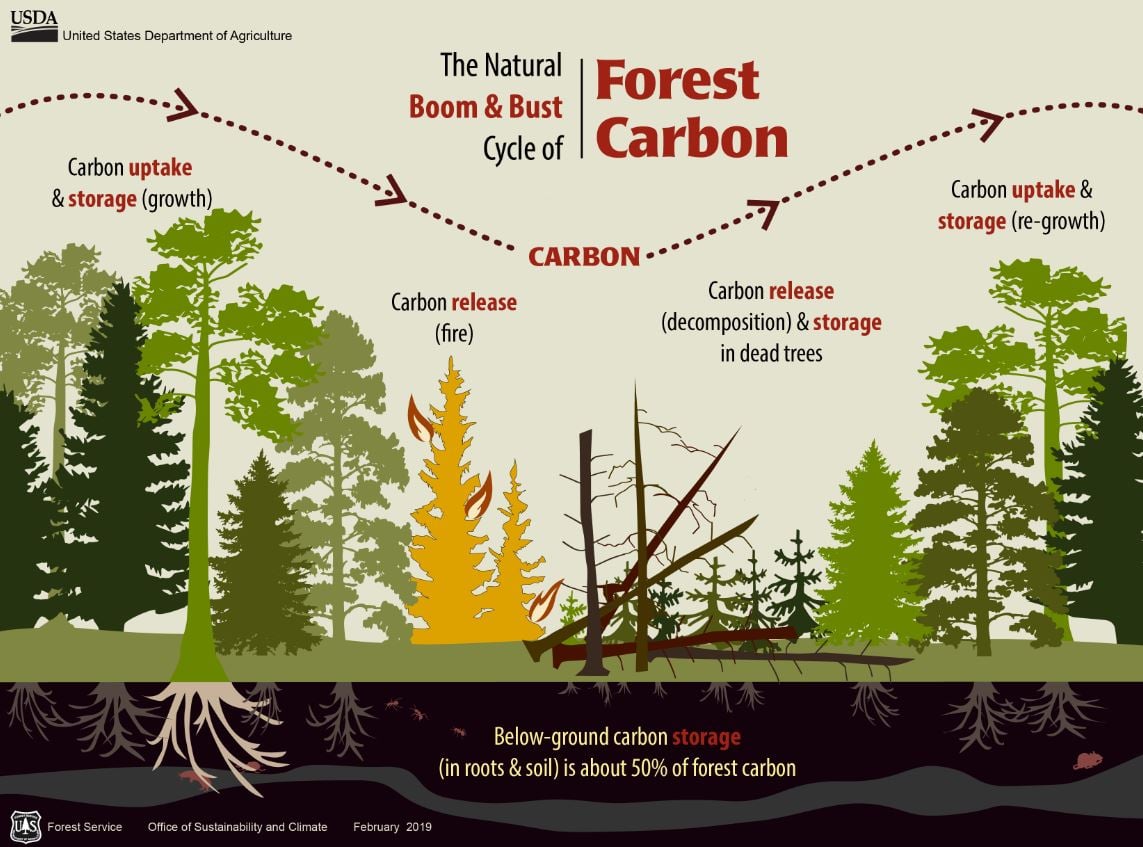

Carbon that has been fixed via terrestrial primary production and processed in the soil is exported to surface water as both organic and mineral carbon compounds. Inland aquatic ecosystems (rivers, lakes, ponds, and reservoirs) play several important roles in the carbon cycle. Carbon export to the coastal ocean is also being quantified, and ecosystem models will describe the movement of continental carbon exports through the coastal food web. Linkages between land use and carbon cycling in nearby aquatic habitats are being characterized in order to understand the effects of human activity such as agriculture and development on aquatic carbon cycling. Data analysis and modeling are used to identify the controls on greenhouse gas emissions from lakes and rivers, as well as the magnitude of carbon burial in sediments. The USGS investigates the amount of carbon burial, emissions, and export taking place in the aquatic ecosystems of the United States.
#Grassland vs forest carbon sequestration professional
Completed the assessment for the conterminous United States divided into three regional reports (USGS Professional Papers 1787- Great Plains, 1797- Western US, and 1804- Eastern US), and Alaska and Hawaii separately.Released a methodology for the national assessment of biologic carbon sequestration ( USGS Scientific Investigations Report 5233).Conduct research and provide science support for increasing carbon sequestration in land management policies and practices.Develop carbon monitoring methods and capabilities.

Evaluate the effects of both natural and anthropogenic driving forces on ecosystem carbon balance and greenhouse gas fluxes.Synthesize and assess current and potential carbon balance (stocks and fluxes) in major terrestrial and aquatic ecosystems.Specifically, LandCarbon is focused on the following research areas:


 0 kommentar(er)
0 kommentar(er)
